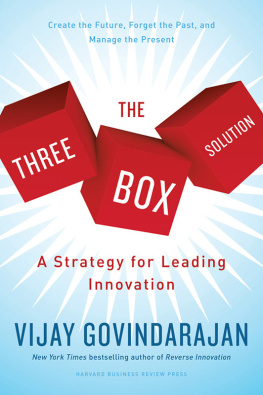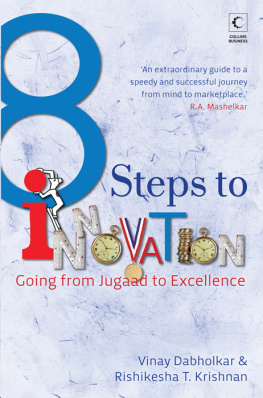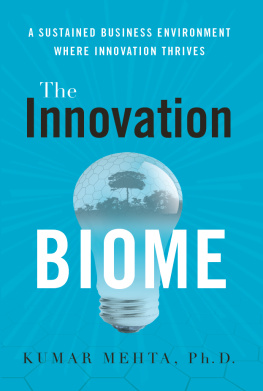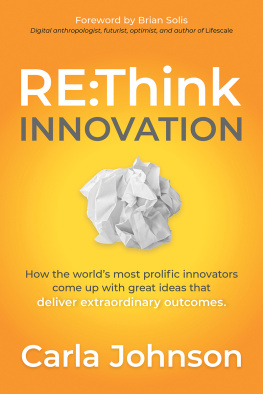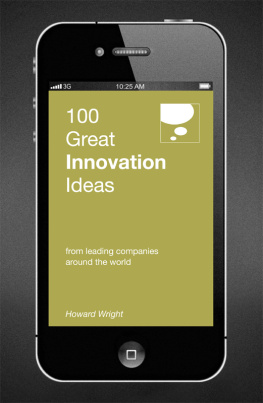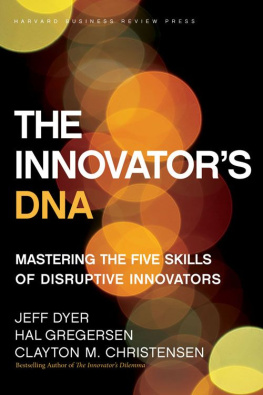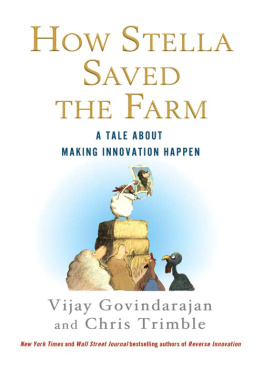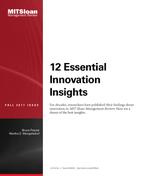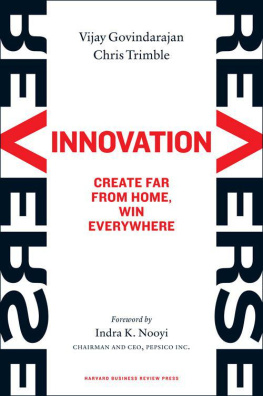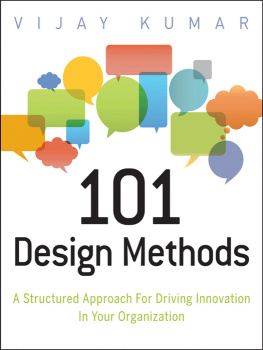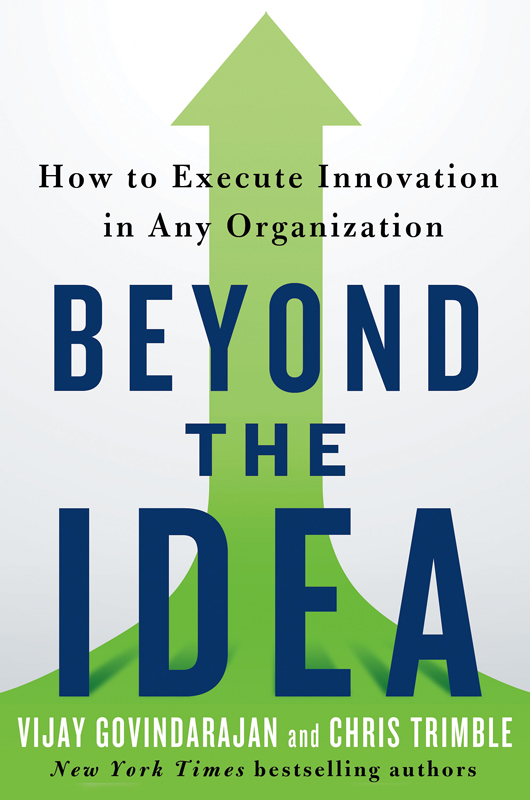
The author and publisher have provided this e-book to you for your personal use only. You may not make this e-book publicly available in any way. Copyright infringement is against the law. If you believe the copy of this e-book you are reading infringes on the authors copyright, please notify the publisher at: us.macmillanusa.com/piracy.
CONTENTS
PREFACE
Thomas Edison said it over a century ago: Genius is 1 percent inspiration, 99 percent perspiration.
Unfortunately, no one listened. When companies launch innovation initiatives, they typically allot almost all of their time and energy to that initial 1 percentthe thrilling hunt for the breakthrough idea. The real innovation challenge, however, lies beyond the idea. It lies in a long, hard journeyfrom imagination to impact.
Even the best-managed corporations in the world struggle to execute innovation initiatives. This challenge, which we call the other side of innovation, is widely misunderstood. Some companies conflate this side and the other side, believing it is all the same. Others imagine that executing an innovation initiative cant be much different than executing day-to-day operations. Both views are wrong. Innovation execution is neither innovation nor execution. It is its own unique beast.
Since the fall of 2000, we have been deeply immersed in studying just this one topic. Along the way, we have produced three books. The Other Side of Innovation: Solving the Execution Challenge (2010) was a general treatment of all innovation initiatives; Reverse Innovation: Create Far from Home, Win Everywhere (2012) examined the specific challenge of innovating to serve customers in the rapidly growing emerging economies; and Ten Rules for Strategic Innovators: From Idea to Execution (2005) focused on high-risk but high-growth potential new ventures inside established organizations.
Along the way, we have both spent an enormous amount of time on the road, giving speeches, making presentations, and delivering workshops to as wide a range of industries as possible. We very often hear things like: I couldnt agree with what you are saying any more thoroughly. But I really need you to spread the word to my colleagues. (If we only had a nickel for each time weve heard this request!)
There is, of course, a limit to how many people we can reach by boarding airplanes and making presentations. There are just the two of us. And yet, weve seen that in order for a company to achieve innovation success, a lot of people have to understand what to do. One person is not enough; ten working on the same innovation challenge is closer to the mark.
Traditional business books, however, have limitations that prevent them from reaching high concentrations of people in a single organization. Why? Number one on the list: People are extremely busy. We are very proud of the clarity and readability of our prior books, but we understand that each takes several hours and several sittings to read. Many executives simply dont have that kind of time.
Therefore, this year, we published two books. Our favorite attribute of both of these books is that they are short.
Earlier in 2013, we published How Stella Saved the Farm: A Tale About Making Innovation Happen. It is a simple parable about a farm in trouble and how the farm innovates to get out of trouble. Though we dont pretend to have matched his literary achievement, we wrote Stella in the spirit of George Orwells Animal Farm. It is a story about animals who run their own farm; it is also a light read with a very serious intent. Though Stella takes only about an hour to read, it still delivers the most fundamental principles at the core of The Other Side of Innovation. (To multiply Stella s impact, we have developed related tools, discussion guides, and workshops, in partnership with the International Thought Leader Network. Please visit Stella s website: howstellasavedthefarm.com.)
In Beyond the Idea, our intent is to convey Heres what you should do and Heres why it works in the most direct, clear, and compact way possible. Weve provided readers a much greater level of specificity than was possible in Stella, but weve nonetheless kept this book concise.
This book includes several critical expansions beyond The Other Side of Innovation. Chapters 2, 3, 5, and 9 include new ideas that we now know are critical for gaining buy-in and understanding. That said, readers of our past books may feel that theyve read much of whats in these pages before. This is a reasonable reaction. We hope that Beyond the Idea s primary impact is not in its intellectual advance, but in its accessibility. Indeed, we hope that the books brevity will help push the management profession one step closer to a state of sophistication wherein practices for managing all forms of innovation are as well understood and systematically practiced as those for quality improvement; as frequently talked about as TQM and Six Sigma.
To slim Beyond the Idea down to its very compact format, weve had to make some choices. Most critically, weve chosen to eliminate the detailed examples that are the hallmarks of our past works. We know that rich examples make concepts more concrete for many readers. We ask such readers to consider reading Beyond the Idea in conjunction with Stella, which is actually a composite of dozens of case studies weve written over the years. Indeed, every detail in Stella, save those obviously intended to amuse, are drawn from real observations at real companies. Alternatively, there are many examples in our past books and articles, and all of our case studies are freely available on the website for The Other Side of Innovation, theothersideofinnovation.com. We do use a select handful of brief company examples in Beyond the Idea. All are drawn either from these case studies or from interviews with company executives. There is one exception, Toyota. Here, we drew heavily from Steven J. Spear and H. Kent Bowens Harvard Business Review article, Decoding the DNA of the Toyota Production System (September 1999).
We have chosen not to provide footnotes in Beyond the Idea. We ask readers interested in examining the formal academic underpinnings of our work to refer to our prior books.
While we believe that we must reach a greater concentration of readers per company to have the impact that we desire, we dont imagine that every employee needs to understand every word in Beyond the Idea . For your own company, it may be useful to think about achieving four levels of understanding, depending on position, as outlined in the table below:
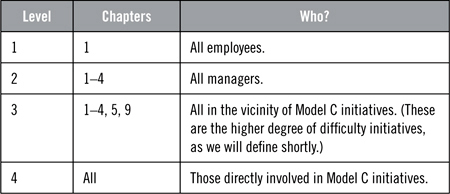
Please reach us by e-mail (vg@dartmouth.edu, chris.trimble@dartmouth.edu) to share your thoughts.
Best wishes,
Vijay Govindarajan
Chris Trimble
September 2013
Dartmouth College
Hanover, New Hampshire
PART ONE
THREE MODELS FOR MAKING INNOVATION HAPPEN
CHAPTER 1
THE OTHER SIDE OF INNOVATION
Innovation is a two-part challenge. Part one is ideas; part two is execution.
To win, you have to succeed at both. Many companies, however, expend most or nearly all of their energies on part one. As such, they tend to produce a great many ideas on paper that never become anything more than ideas on paper.
The most important message in Beyond the Idea is very simple: Part two, innovation execution, is its own unique discipline. It requires time, energy, and distinct thinking. Unfortunately, few companies treat it as such. In fact, few companies give it much thought at all.


